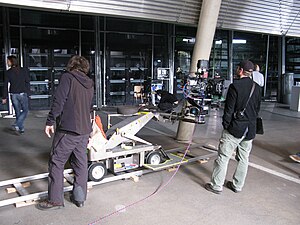The basic premise is the same across all formats though, you have a shutter(or a combination thereof), a lens, and a small set of circuitry that opens these shutters, flips mirrors, and times everything down to thousands, or sometimes millions of seconds.
Film is simply an extrapolation thereof, old film strips are just long lines of images, played at a fast frame rate (24 or 30 fps), or an extremely fast frame rate (1000+) for modern high speed cameras.
Time lapse photography is a method utilized by a variety of filmmakers over generations. Time lapse, and slow motion are effectively opposite ideas. Things that you see in slow motion such as this one are images captured at a rate much FASTER than the human eye can see.
The opposite end of this spectrum is time lapse. Video that produce a time lapsing effect is captured a much SLOWER rate than the eye can see.
Work here property of http://projectyose.com/
Time lapse photography is the focus of our current project and will ultimately be the focus of many future posts regarding such. In the video above, you will notice a motion from the camera where it moves on a plane either on a diagonal, or panning from left to right. It is the production of this motion, in conjunction with telling the camera when to fire, that will be the main focus of this project.
There are many high end professional camera dollies on the market:
Many that are used in high end film production and film sets. These cost thousands or tens of thousands and can carry a camera man, and a 200 lb camera.
There are also small production dollies that carry either a small 1080p camera, a RED camera, or a beefy SLR.
There are also smaller production dollies made specifically for DSLRs. This is going to be the type of dolly that we are working on. It seems many DSLR owners have already been seeking a cheap solution to adding motion to their work, so as such a great community of photographers has already formed, many of whom are extra supportive of open source projects and often support reproductions, and sharing of ideas. One resource that immediately shows it's wealth is http://openmoco.org/ This community of photographers, programmers and problems solvers have been sharing ideas for years and many of them have started their own businesses providing motion control to other photographers.
In part 2 of this introduction I will further explain the mechanics behind time lapse, motion control, and how the two come together to make great video compositions. In the posts following this, we will be building a motion controlled camera dolly to carry a DSLR. To build it, we're going to use many open source parts, both hardware, and software wise. The heart of the project contains an Arduino, an LCD shield, motor shield, and camera controller. As such, all of the programming is almost entirely going to be related to the Arduino.
If you're interested in more reading, check out openmoco.org, or for more videos http://timescapes.org/
If you're interested in purchasing a ready-built dolly, that you can hook up to a DSLR camera and go, then I can't recommend a company any higher than dynamicperception.com. Dynamic Perception highly supports open source design, and is a major inspiration for the build that follows. They make amazing products that is backed up by amazing customer support. For those of us that like to tinker though, stay tuned! We're going to go over a variety of options and things to consider when building your own dolly.

No comments:
Post a Comment